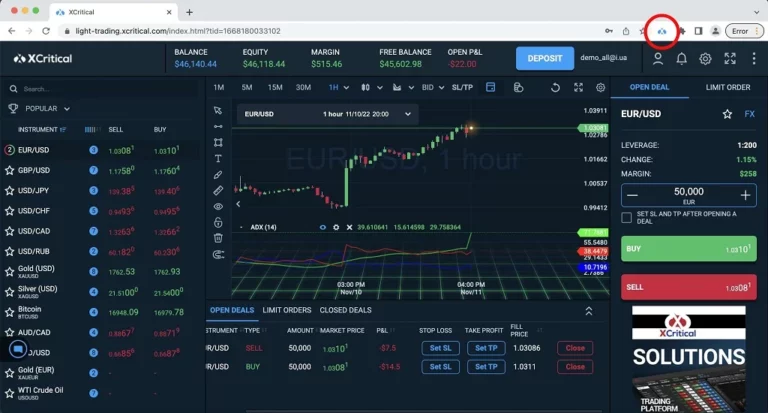Content
As stablecoin payment system regulations tighten, some stablecoins may face challenges in meeting new compliance requirements, affecting their availability and use. Businesses should choose stablecoins that align with current and anticipated regulations to minimize risks. Cryptocurrencies have transformed the financial landscape, offering various options tailored to different needs. The three main types are Bitcoin, stablecoins, and altcoins, each with distinct features and strengths. Some Stablecoins are pegged to other currencies like the Euro or commodities like gold.
Types of Stablecoins and Their Risk Profiles
If a stablecoin’s owner wants to cash out the coin, the real money can ultimately be taken from the reserve. Cryptocurrency’s unpredictability comes in contrast to the generally stable prices of fiat money, such as U.S. dollars, or other assets, such as gold. Values of currencies like the dollar do change gradually over time, but the day-to-day changes are often more drastic for cryptocurrencies, which rise and fall in value regularly. Stablecoins aim to provide an alternative to the high volatility of popular cryptocurrencies, which can make cryptocurrency less suitable for common transactions. Cryptocurrencies worth $2 million might be held as a reserve to issue $1 million in Decentralized application a crypto-backed stablecoin, insuring against a 50% decline in the price of the reserve cryptocurrency. For example, MakerDAO’s Dai (DAI) stablecoin pegged to the U.S. dollar but is backed by Ethereum (ETH) and other cryptocurrencies worth about 155% of the DAI stablecoin in circulation.
How Mural Enhances Stablecoin Transactions

If the stablecoin system runs out of assets, it restocks by inflating the native LUNA https://www.xcritical.com/ supply. Dan Shulman, former president and CEO of PayPal said, “The shift toward digital currencies requires a stable instrument that is both digitally native and easily connected to fiat currency like the U.S. dollar”. Thus with this new stablecoin, PayPal aims to bridge the gap between fiat and web3 for consumers, merchants, and developers. Stablecoins come in a few different types; such as algorithmic, crypto-backed, commodity-backed, or fiat-backed. Each of these types has a slightly different method of retaining its value and their authority structures also vary. To explain, it’s a common misconception that algorithmic coins are more decentralized.
What are the limitations of using PYUSD for cross-border payments?
For fiat-collateralized Stablecoins, users deposit fiat currency with the issuer. For crypto-collateralized ones, users lock up crypto assets in a smart contract. Stablecoins are a type of cryptocurrency that are designed to maintain a stable value relative to a specific asset or a pool of assets. They can be pegged to a currency like the US dollar or to a commodity’s price such as gold.
In addition, PYUSD is easily compatible with third-party exchanges, wallets, decentralized applications (dApps), and NFT marketplaces too. PYUSD also allows you to transfer funds between PayPal and compatible external wallets, between PayPal and Venmo wallets without fees, and fund purchases via PayPal’s checkout process. You can even swap your PYUSD to any of the other cryptocurrencies currently supported by PayPal directly inside your account. PYUSD is US dollar-denominated, easily redeemable, and transparent stable cryptocurrency. It’s also fully backed by US dollar deposits, US treasuries, and similar cash equivalents.
One should consider this approach if it needs to benefit from blockchain advantages while having guarantees of stability provided by fiats. The trust mechanism then relies on the rule that the private key of the deployer belongs to the single person (script on the backend actually) who has the right to generate new coins. The full decentralization of your currency is very questionable in this case. To sum up this part, while choosing the right blockchain platform to launch a stablecoin the main focus should be turned to the supply and demand volume desired for your project. It is worth noting, that if you want to create your own decentralized stablecoin (like Dai or Ampleforth) you should remember that it will be tied to the chosen blockchain.
On the downside, CBDCs are less anonymous than crypto and may be subject to more government control. The top stablecoins by market cap include Tether (USDT), which is backed by the US dollar. USDT is currently ranked of all cryptocurrencies by total market capitalization, with a market cap of $ EUR. In January of 2015, Bitfinex allowed Tether (USDT) to be traded on their exchange platform for the first time.
Most importantly, it could be foundational in forming new regulatory approaches to strengthen the stability and security of digital currencies. This, in turn, could lead to a global rethinking and reforming of the financial system, making it more adaptable to the changing conditions of the digital economy. The company had a market capitalization of nearly $99 billion as of March 2024. A stable value promotes using stablecoins as a medium of exchange like conventional money.
This means USDT is a stablecoin, fluctuating in value with the U.S. dollar and backed by Tether’s dollar reserves. USDT is issued by Tether, a company owned by iFinex, the Hong Kong-registered company that also owns the crypto exchange BitFinex. Ultimately, the stablecoin market extends the capabilities of BTC and other cryptocurrencies as a medium of exchange, along with the mobility of crypto assets. It also ensures that Bitcoin isn’t just seen as a store of value; in fact, entire DeFi ecosystems can be built on the Bitcoin network. DAI stablecoins are decentralized but also overcollateralized – backed by Ethereum (ETH) deposited into its smart contracts. An algorithmic stablecoin makes use of algorithms and smart contracts that manage the amount of tokens in circulation.
Stablecoins are very useful for payments for everyday purchases, and to send funds between people anywhere in the world. That’s why there is over $100 billion held in stablecoins at any given moment, and millions of people use them every day. Stablecoins can also be used with smart contracts, which are a kind of electronic contract that is automatically executed when its terms are fulfilled. The stability of the digital currency also helps circumvent disagreements that could arise when dealing with more volatile cryptocurrencies. Instead, these others use technical means (such as destroying some of the coin supply in order to create scarcity) to keep the price of the crypto coin at the fixed value.

USD Coin is a stablecoin launched jointly by cryptocurrency firms Circle and Coinbase in 2018 through the Centre Consortium. To give you a taste of the experimentation happening in stablecoin land, let’s run through some of the most popular stablecoins. After fixing eventual troubles you should prepare a few additional important things. Though, before delivering your stablecoin to the mainnet prepare initial liquidity and coins minting plan (e.g. airdrops, campaigns, swaps, rewards, incentivization mechanism description, etc.). The establishment of the desired trust mechanism with the algorithm for backing in crypto calculation, emission, total cap, etc. is another important question to consider.
For instance, if a stablecoin like Tether (USDT) or USD Coin (USDC) is backed by the US dollar, its value will stay as close as possible to $1 USD. While the price might fluctuate slightly due to supply and demand, it generally remains near the $1 mark. Yes, a Stablecoin can lose its peg if its value diverges from the asset it’s pegged to. This usually happens due to market dynamics, like sudden demand changes or issues with the underlying collateral. However, most Stablecoin issuers implement mechanisms to restore the peg in such situations.
As of now, the largest stablecoin, i.e., Tether or USDT, has a market value of almost $58 billion. The second-largest stablecoin in the crypto economy, USD Coin or USDC, holds a market value of almost $15 billion. So, you can clearly anticipate the popularity levels of stablecoin and the reasons for eagerness to discover more about stablecoin categories. Mural offers services that enhance stablecoin transactions, providing businesses with a secure and efficient way to integrate stablecoins into their payment and settlement processes. By leveraging stablecoins like USDC and USDT, Mural enables instant global payments in over 40 currencies, reducing transaction costs and enhancing operational efficiency. Algorithmic stablecoins, on the other hand, use algorithms to control the supply and value of the stablecoin.
If you look closely, less than 4 percent was actual cash, while most is held in short-term corporate debt. If markets drop, those assets (and the other non-cash assets) could quickly decline in value, making the Tether coin less than fully reserved exactly when it may most need to be. Stablecoins solve one of the key problems with many mainstream cryptocurrencies, namely, that their drastic fluctuations make it tough, if not impossible, to use them for real transactions.
- They offer a way to move money internationally quickly and with relatively low fees.
- A number of fiat currencies are pegged to the U.S. dollar, including those of Panama and Saudi Arabia.
- For instance, in November 2021, Senator Cynthia Lummis (R-Wyoming) called for regular audits of stablecoin issuers, while others back bank-like regulations for the sector.
- Bridge liquidity, if the bridge gets hacked, the bridged stable depegs, you can’t take it back to Circle, or Tether or Paxos and redeem for 1 dollar because they don’t recognize that token, they didn’t mint it.
Starting from January 2017, the amount of outstanding Tether (USDT) grew from $10 million to almost $2.8 billion in September of 2018. This was followed by a lawsuit in April of 2019 from New York Attorney General Letitia James who accused Bitfinex and Tether of misappropriating reserves funds to cover an 850$ million dollar deficit. Tether continues to remain the center of speculation in cryptocurrency markets and blockchain networks with many users doubting their liquidity and stability. The non-collateralized or algorithmic stablecoins follow an algorithm for controlling the stablecoin supply.


Los comentarios están cerrados.